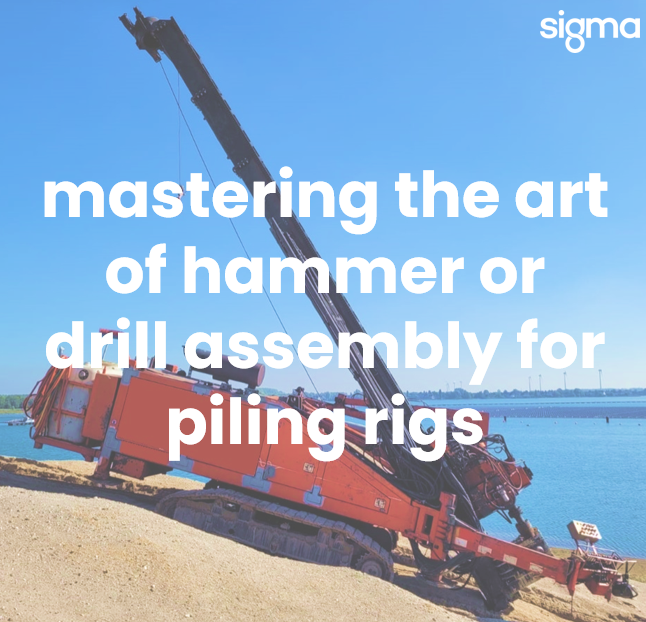
Introduction
Piling rigs are indispensable machines in construction, providing the foundation for stability and structural integrity in various projects, from buildings to bridges. Among the crucial components of these rigs are the hammers and drills, which play a pivotal role in driving piles into the ground. Proper assembly of these components is vital for optimal performance and safety. In this guide, we'll delve into the intricacies of hammer or drill assembly for piling rigs, offering insights and tips for mastering this essential task.
Understanding the Components
Before diving into assembly procedures, it's essential to familiarize yourself with the key components involved:
- Hammer Assembly: Piling hammers are hydraulic or pneumatic devices designed to impart force onto the pile, driving it into the ground. They consist of various parts, including the hammer body, piston, ram, guides, and cushion blocks.
- Drill Assembly: Piling rigs equipped with drill attachments are used for creating holes or shafts in the ground for pile placement. Drill assemblies typically include the drill bit, drill string, rotary head, and auxiliary components such as stabilizers and casing.
Assembly Procedures
Proper assembly of hammers or drills is crucial for ensuring efficiency, safety, and optimal performance. Here's a step-by-step guide for each:
Hammer Assembly:
a. Inspect all components for any signs of damage or wear.
b. Ensure that the hammer body and other parts are clean and free from debris.
c. Lubricate moving parts as per manufacturer recommendations.
d. Position the piston and ram assembly within the hammer body, ensuring proper alignment.
e. Install guides and cushion blocks securely.
f. Connect hydraulic or pneumatic hoses and verify proper connections.
g. Conduct a thorough inspection to confirm assembly integrity.
Drill Assembly:
a. Inspect the drill bit for any damage or wear, and replace if necessary.
b. Assemble the drill string by connecting individual drill pipes using appropriate connections.
c. Attach the drill bit securely to the drill string, ensuring proper alignment.
d. Install any required auxiliary components, such as stabilizers or casing shoes.
e. Connect the drill assembly to the rig's rotary head or drill drive system.
f. Verify the rotation and torque settings, adjusting as needed for the specific drilling conditions.
g. Conduct a functional test to ensure smooth operation.
Safety Considerations
Assembling hammers or drills for piling rigs involves working with heavy machinery and hydraulic systems, posing potential hazards. Here are some safety considerations to keep in mind:
- Follow manufacturer guidelines and recommendations for assembly procedures.
- Use appropriate personal protective equipment (PPE), including gloves, safety glasses, and steel-toed boots.
- Ensure the rig and assembly area are stable and secure to prevent accidents.
- Be cautious when working with hydraulic systems, avoiding contact with pressurized components.
- Conduct regular inspections of equipment and components for signs of wear or damage.
Conclusion
Mastering the assembly of hammers or drills for piling rigs is essential for ensuring efficiency, safety, and optimal performance in construction projects. By following proper procedures, conducting thorough inspections, and prioritizing safety measures, construction professionals can maximize the effectiveness of their piling operations while minimizing risks and downtime.
Contact us with any enquiries!
T: +44 (0) 1642 206100
E: sales@sigmaplantfinder.com
Disclaimer: This blog post contains content generated by an artificial intelligence (AI) model. While we have made efforts to ensure the accuracy and quality of the information provided, it is important to note that AI-generated content may not always be error-free or fully aligned with current standards, regulations, or the latest research. We recommend using this information as a starting point for your research and analysis, but we strongly encourage you to verify the facts, consult experts, and cross-reference the content with trusted sources before making any decisions or drawing conclusions based on the information presented in this blog post. The views and opinions expressed in this content are not necessarily those of the blog's author or publisher, and we cannot be held responsible for any consequences that may arise from its use.
